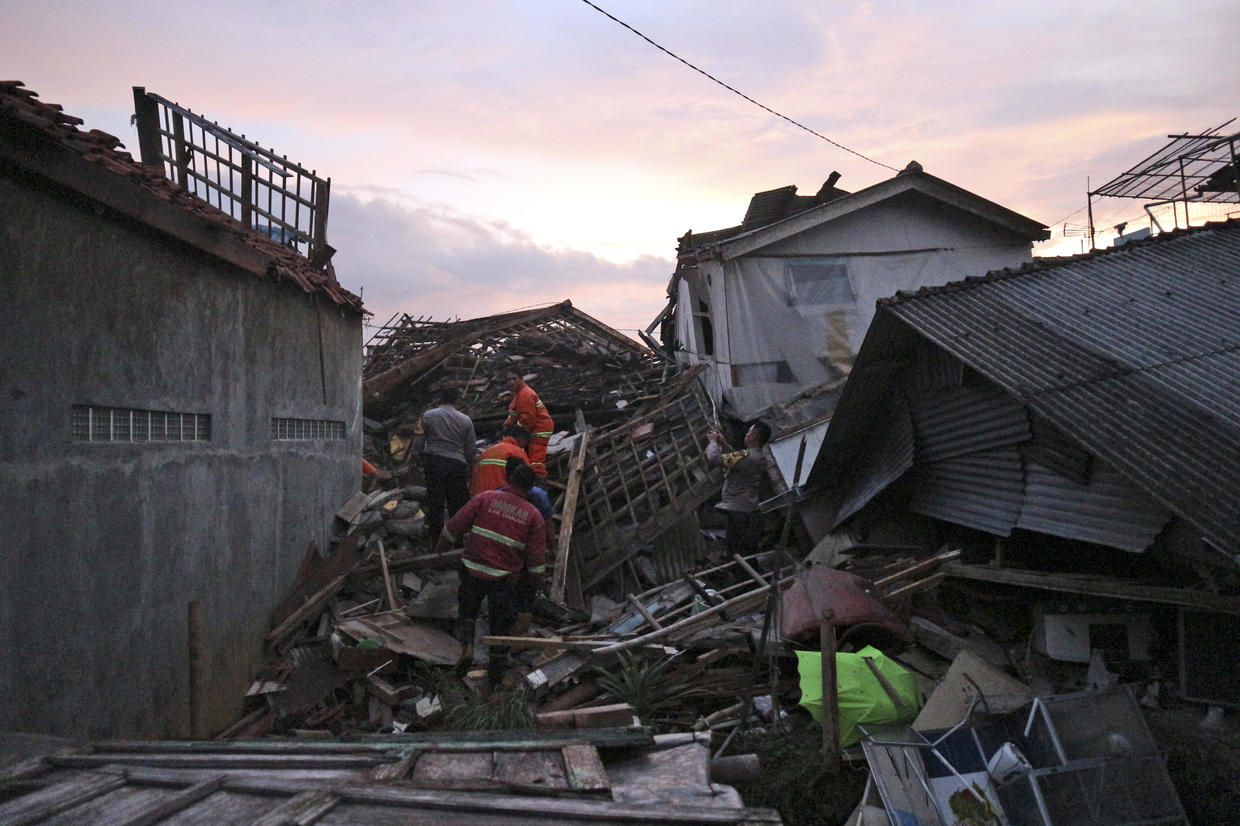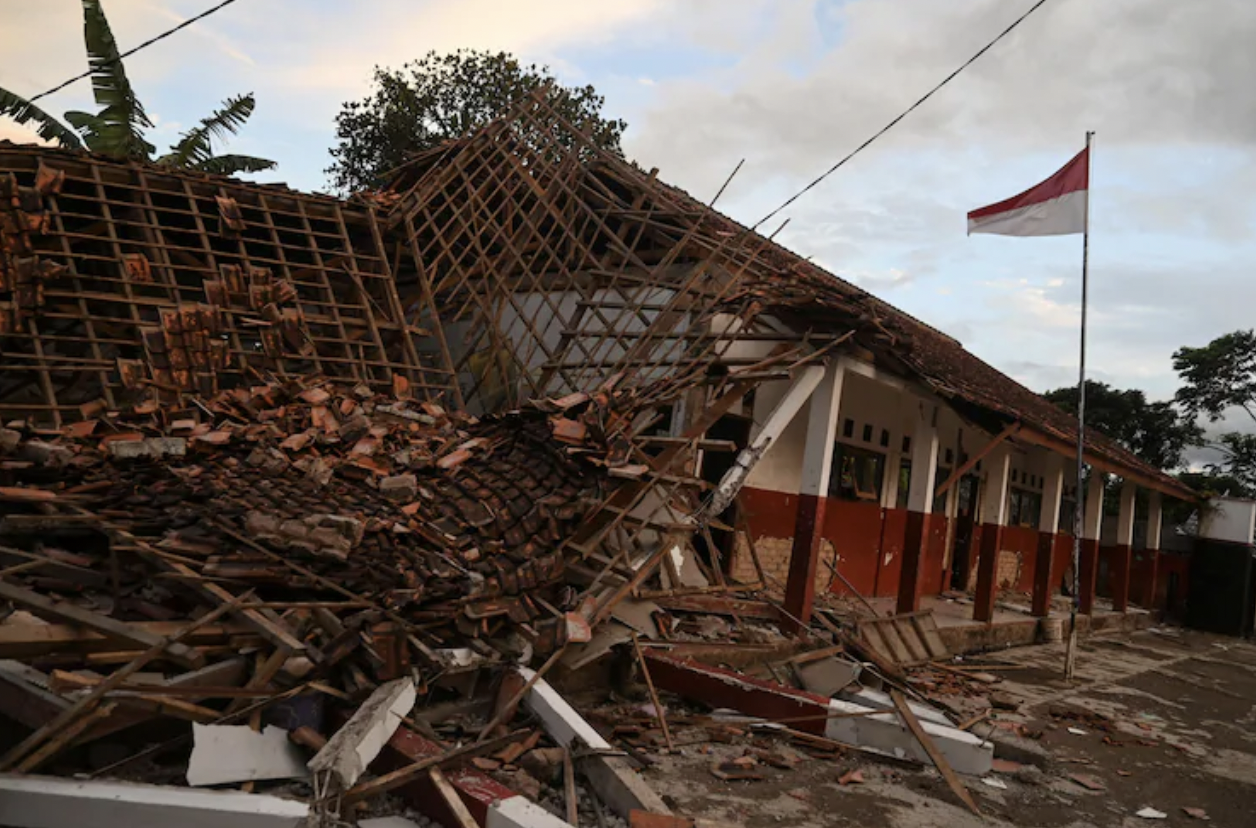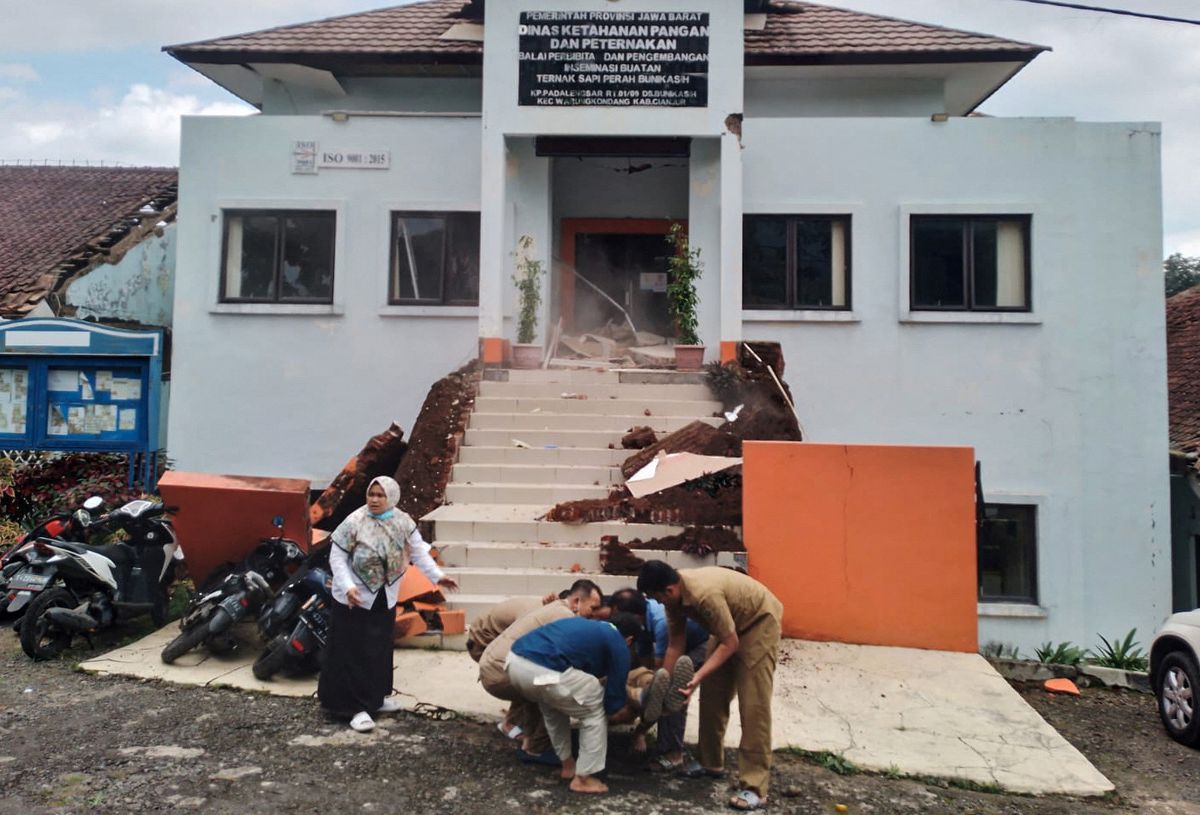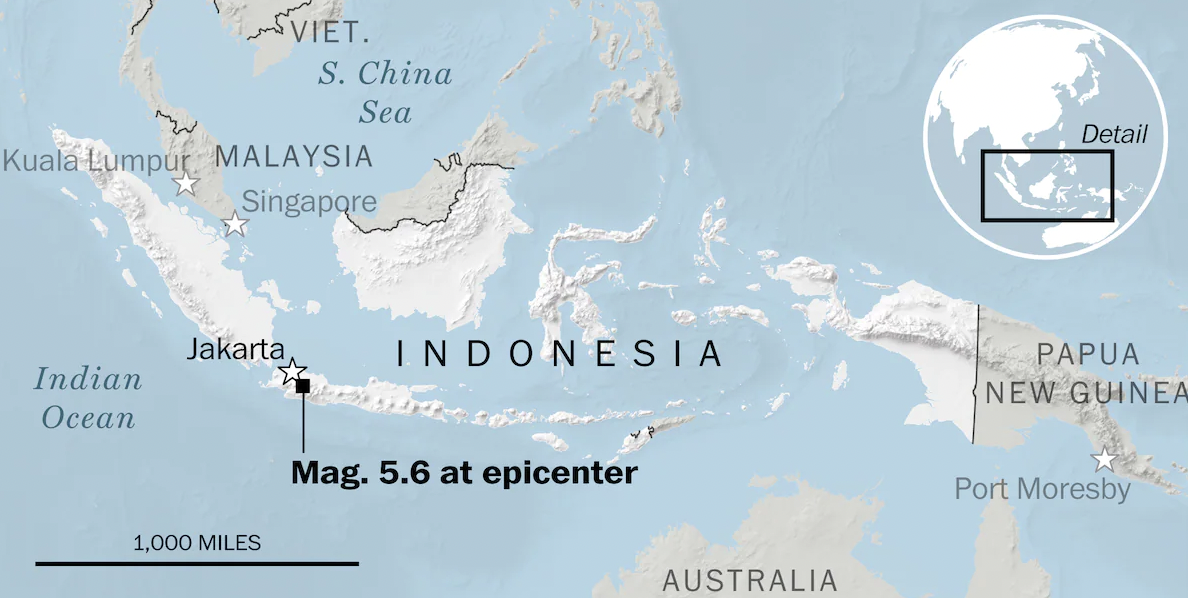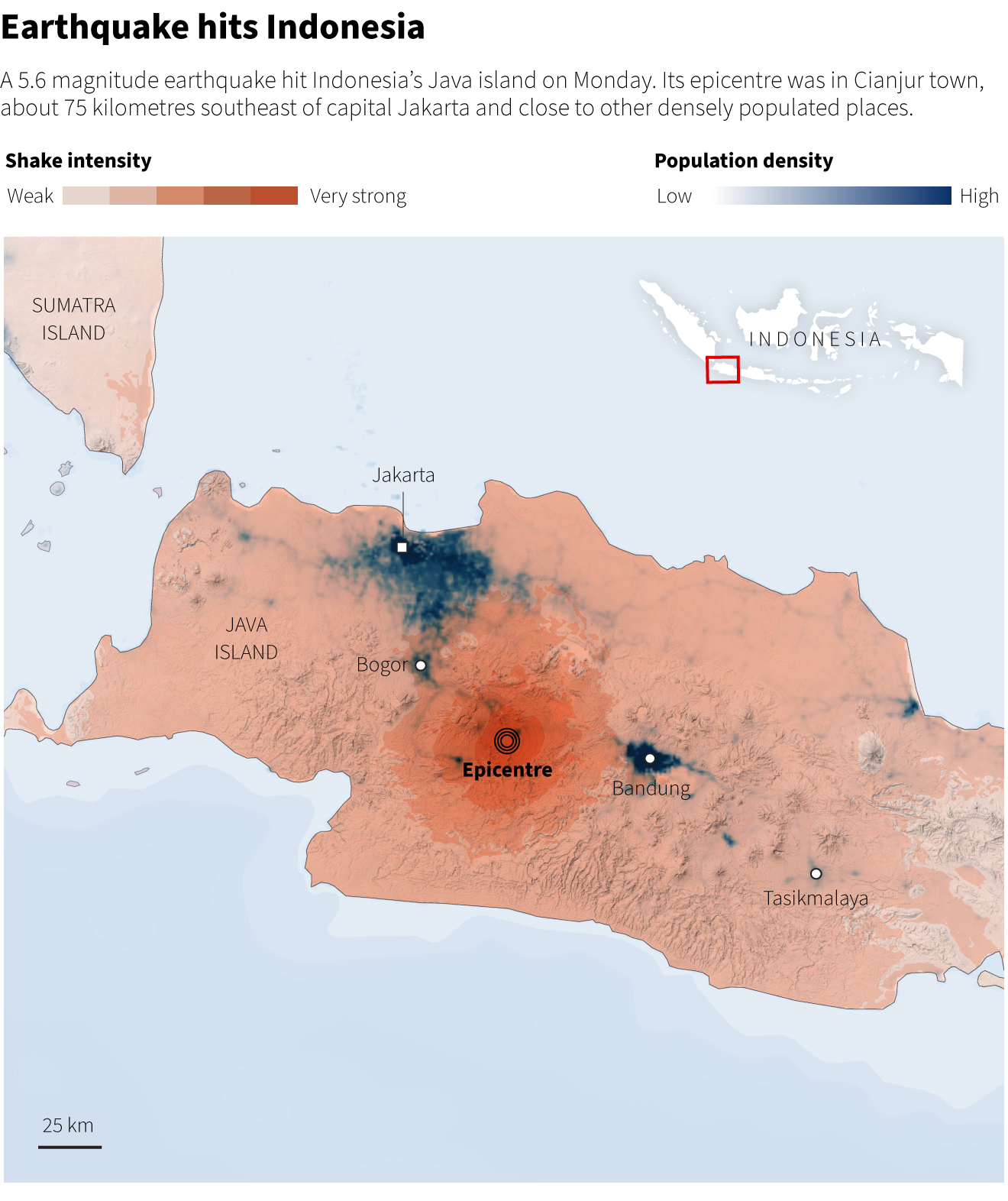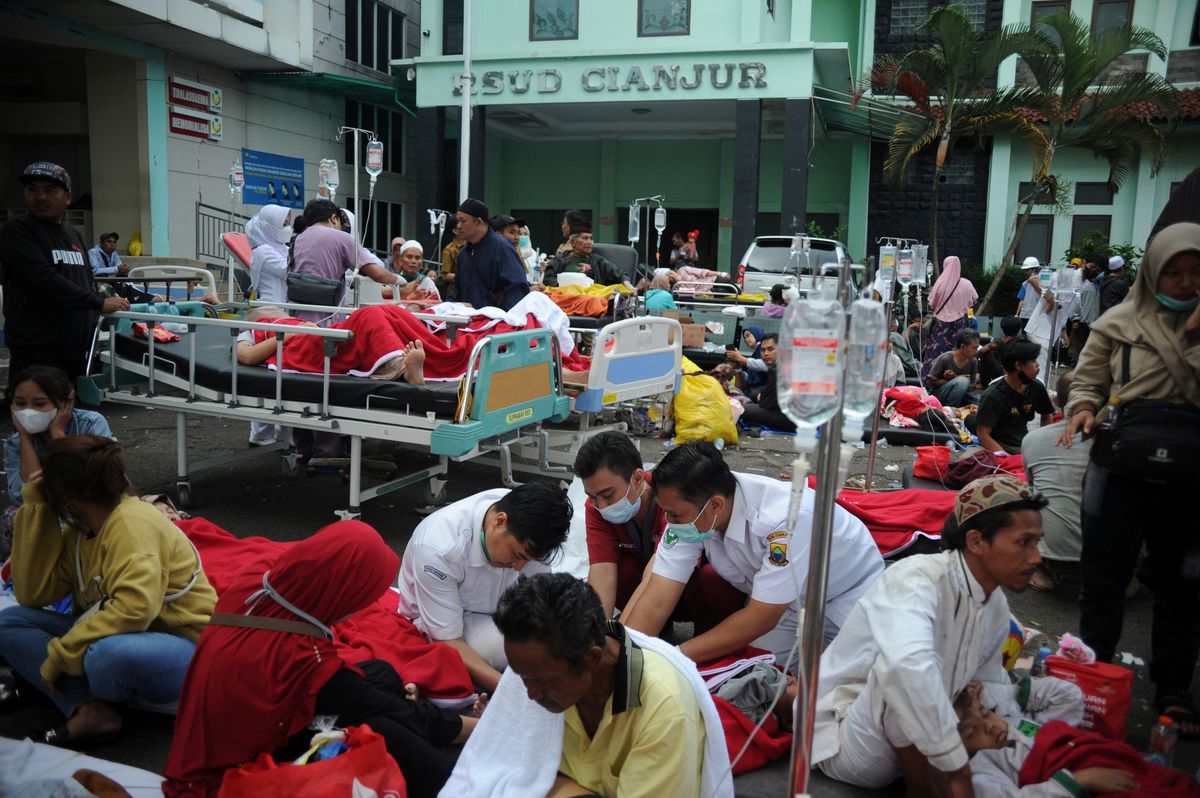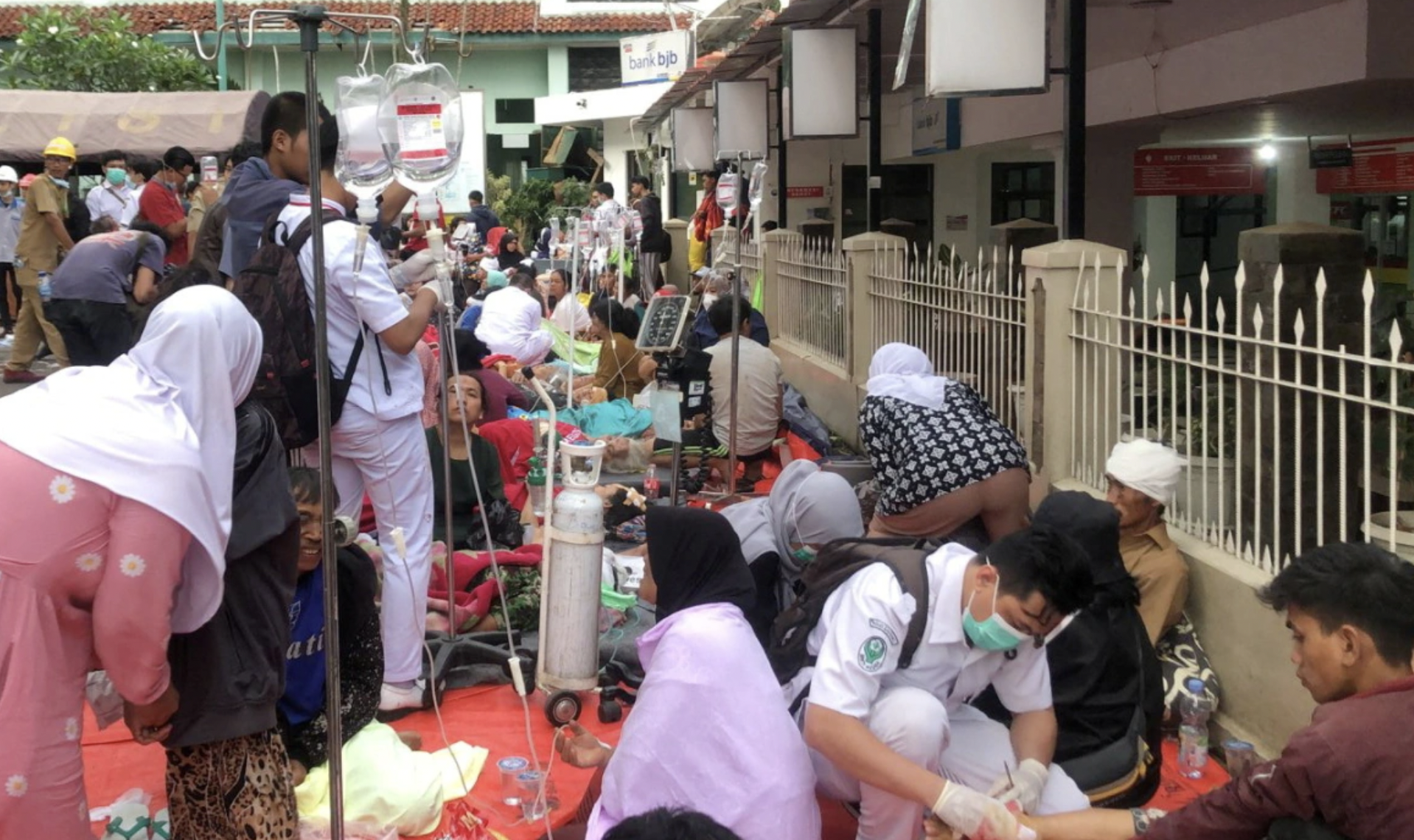The Search For Survivors Continues After An Earthquake Claimed 162 Lives In Indonesia
Many people are believed to still be trapped beneath the rubble, and the death toll will likely see a sharp increase in correlation with ongoing rescue efforts.
More than 160 men, women, and children have been killed as a 5.6 magnitude earthquake hit Indonesia's West Java province yesterday, 21 November
According to The Washington Post, local officials said the devastating quake, believed to be the deadliest this year in Indonesia, struck the island at 1.21pm local time.
Tragically, at least 162 people died and hundreds more were injured from being crushed under the ruins of buildings that were destroyed during the catastrophe.
CBS News reported West Java governor Ridwan Kamil as saying that many of the victims were public school students who had finished their classes for the day. They were taking extra lessons at Islamic schools, when the buildings collapsed.
Many people are believed to still be trapped beneath the rubble, and the death toll will likely see a sharp increase in correlation with ongoing rescue efforts.
Rescuers searching for survivors among the ruins of houses in Cianjur, West Java, Indonesia.
Image via Ragga Firmansyah/CBS NewsA school building severely damaged by the earthquake in Cianjur, West Java.
Image via Iman Firmansyah/REUTERSMunicipality officers evacuate their injured colleague following an earthquake in Cianjur, West Java, Indonesia.
Image via Regional Disasters Mitigation Agency/Antara Foto via REUTERSThe epicentre of the quake occurred near the town of Cianjur in West Java, where aftershocks could be felt 75km away in the capital of Jakarta
Roughly 175,000 people live in the mountainous town of Cianjur, which mostly consists of small one-storey and two-storey buildings.
More than 2,200 of these houses have been damaged, said disaster management officials in Cianjur, with approximately 13,000 people displaced, reported Reuters.
Ricky Susan, a local journalist in Cianjur, told The Washington Post that he was having coffee at a military barracks in town when the earthquake hit.
After he fled outside, he watched the building he was previously relaxing in shake violently. He then looked across the barracks. To his shock, the place where a mini-mart once stood had now been reduced to a pile of rubble.
"I saw a group of the mini-market employees standing outside the ruins, and they were all crying," he said. "They told me that one of them didn’t make it out and was buried in the rubble."
Cianjur's regional hospital was filled to capacity, forcing hundreds to gather outside as they waited for treatment
Emergency workers were forced to treat the injured outside, in tents erected in parking lots and open spaces. Survivors were given oxygen masks and received intravenous treatment, according to reporters from The New York Times.
"You can see it yourself, some [of the victims] got their heads [and] feet sewn outdoors. Some [of them] got stressed and started crying," Kamil said.
Medical workers treat the injured outside the district hospital in Cianjur, West Java, Indonesia.
Image via Raisan Al Farisi/Antara Foto via REUTERSMedical workers treat the injured outside a hospital building in Cianjur, West Java, Indonesia.
Image via Raisan al Farisi/Antara Foto via Al JazeeraIndonesia's frequent earthquakes are a result of its position on the Ring of Fire, a horseshoe-shaped belt of volcanoes and fault lines along the Pacific Basin
Its position along this arc means Indonesia is hit by small and large earthquakes that occur almost every day.
Monday's quake was the latest in a series of recent disasters that have befallen the volatile archipelago.
In February of this year, a 6.2 magnitude earthquake killed at least 25 people and injured more than 450 others in West Sumatra province. In January 2021, a 6.2 magnitude earthquake killed more than 100 people and injured nearly 6,500 people in West Sulawesi province.
